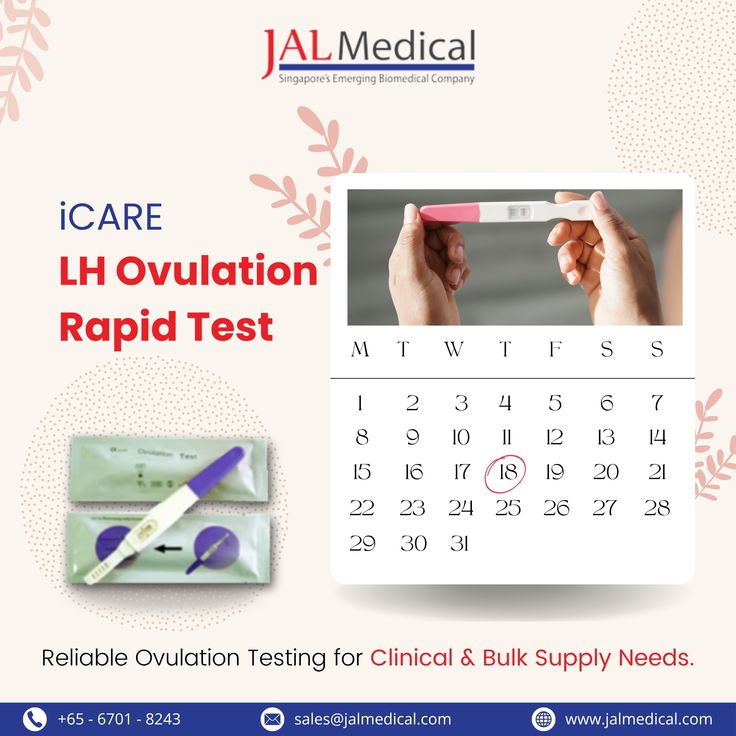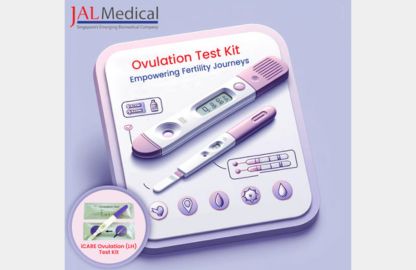Table of Contents
Objective
This article highlights the most frequent and critical mistakes individuals make when using ovulation test kits, such as ovulation monitor kits, ovulation test strips and ovulation predictor kits. Understanding and avoiding these errors can help users improve the accuracy of ovulation detection and make the most out of their fertility tracking efforts.
What happens if you test at the wrong time of day using an ovulation test kit?
One of the most common issues with ovulation test kits is testing first thing in the morning. While this timing works for pregnancy tests, it does not always apply to ovulation tracking. Luteinizing hormone (LH) tends to surge in the early morning but appears in urine a few hours later.
Testing between 10 a.m. and 8 p.m. often increases the accuracy of results with ovulation urine test kits. Testing too early or too late in the day may lead to false negatives or missed LH surges. Users may also be advised to limit fluid intake for a few hours before testing to avoid diluted urine, which can compromise the effectiveness of ovulation checker kits.
Why is it a mistake to start using ovulation test kits on the wrong day of your cycle?
Another mistake is miscalculating the start date for testing. The LH surge typically occurs 24 to 36 hours before ovulation. If you begin testing too early, you may waste test strips. Too late and you may miss the surge altogether.
To properly use ovulation monitor kits, calculate the average length of your cycle. Subtract 17 from your average cycle length to estimate when to start testing. For example, with a 30-day cycle, testing should begin on day 13. For irregular cycles, it’s safer to start earlier and test longer using ovulation test strips.

Ovulation Test Strips: How can misreading faint lines lead to incorrect conclusions?
Unlike pregnancy tests, where even a faint line may be considered positive, test ovulation strips require the test line to be as dark as or darker than the control line. This distinction is critical.
A faint test line on ovulation prediction kits is often mistaken as a positive result, leading users to misjudge their fertile window. Carefully following manufacturer instructions and understanding the visual cues on your ovulation check kit is essential to avoid misinterpretation.
Where do users go wrong by testing only once per day with ovulation test kits?
LH surges can be brief – lasting only a few hours in some cases. If you test once daily, particularly during the evening, you may completely miss the peak LH level. This is especially relevant for those using ovulation strips, which are designed to detect this specific surge.
It may be advisable to test twice daily during your expected fertile window – once in the late morning and again in the early evening. This approach enhances the likelihood of detecting the surge accurately and making informed decisions.
What impact does over hydration have before using ovulation urine test kits?
Drinking too much water before using an ovulation urine test kit can significantly dilute LH levels in urine, making it harder to detect the hormone surge. Many users unknowingly decrease the effectiveness of ovulation test kits by consuming large amounts of fluid just before testing.
To mitigate this, avoid drinking excessive fluids for at least two hours before the test. Aim to use moderately concentrated urine for better accuracy. Some of the best ovulation test strips come with detailed instructions on fluid restrictions before sample collection to ensure optimal detection.
Ovulation Test Kits: Why is relying solely a risky approach for tracking fertility?
While ovulation predictor kits offer valuable insights, relying on them as the sole method of fertility tracking can lead to missed or misinterpreted data. Ovulation can be affected by stress, illness and hormonal fluctuations, which may not always trigger a typical LH surge.
Incorporating additional methods such as tracking basal body temperature (BBT) or monitoring cervical mucus can improve reliability. When used alongside ovulation prediction kits, these natural signs provide confirmation and context that test kits alone may not deliver.
How can improper storage and handling of ovulation test kits compromise results?
Exposure to moisture, heat or improper sealing can degrade the chemical reagents in ovulation test kits. Storage in bathrooms, where humidity levels fluctuate, is a frequent mistake. Likewise, using ovulation test strips past their expiration date can result in inaccurate readings or test failure.
To preserve accuracy, store kits in a cool, dry place and avoid touching the reactive strip with fingers. Follow all storage guidelines provided by the ovulation test kit manufacturer to maintain product reliability.
What issues arise from using an unsuitable type of ovulation test kit?

All ovulation test kits are not the same. For example, individuals with PCOS may have consistently elevated LH levels, which can produce frequent false positives with standard ovulation strips. In such cases, using a more advanced ovulation monitor kit with dual hormone detection may be more appropriate.
Failing to choose the right test for your hormonal profile can lead to repeated errors. Understanding your body’s unique hormonal behavior and selecting a suitable test type is essential for dependable ovulation tracking.
Where do users go wrong by reusing ovulation test strips or delaying result interpretation?
Ovulation test strips are single-use devices. Attempting to reuse them is both ineffective and unsanitary. Additionally, interpreting results after the recommended time window (usually 5-10 minutes) may result in misleading readings due to evaporation lines or fading.
Every ovulation rapid test includes a strict interpretation window. Results should always be read within the time specified in the instructions to ensure accuracy. Discard used strips immediately after use.
What is the misconception that ovulation test kits confirm ovulation itself?
A frequent misunderstanding is that a positive result from an ovulation predictor kit confirms that ovulation has occurred. In reality, these kits detect the LH surge, which signals that ovulation may occur soon, but they do not confirm it.
Ovulation may fail to happen even after a detected surge, particularly in anovulatory cycles. Confirmation of ovulation requires other methods, such as progesterone level testing or ultrasound. Recognizing this limitation is key to using ovulation prediction kits correctly.
Conclusion
Ovulation test kits, whether they are ovulation monitor kits, test ovulation strips or ovulation rapid test kits, are useful tools for identifying fertile windows. However, their accuracy depends on correct usage, timing, storage and interpretation. Testing at the wrong time, overhydrating, misreading faint lines or assuming they confirm ovulation are just a few of the critical mistakes that can reduce their effectiveness.
By understanding these common errors and following best practices, users can make informed decisions and improve the precision of their ovulation tracking efforts.
FAQs About Ovulation Test Kits
When is the best time to use an ovulation test kit during the day?
Mid to late afternoon is generally ideal for detecting LH in urine.
Can I start using ovulation test strips on any day of my cycle?
No. You should calculate your fertile window and begin testing a few days before expected ovulation.
What does a faint test line mean on an ovulation test strip?
It usually means a negative result. The test line must be as dark or darker than the control line for a positive result.
Should I avoid drinking water before using an ovulation test kit?
Yes. Limit fluid intake at least two hours before testing to avoid diluting the urine sample.
Do ovulation test kits confirm that ovulation has occurred?
No. They detect the LH surge, which indicates ovulation may happen soon but doesn’t guarantee that it has occurred.








